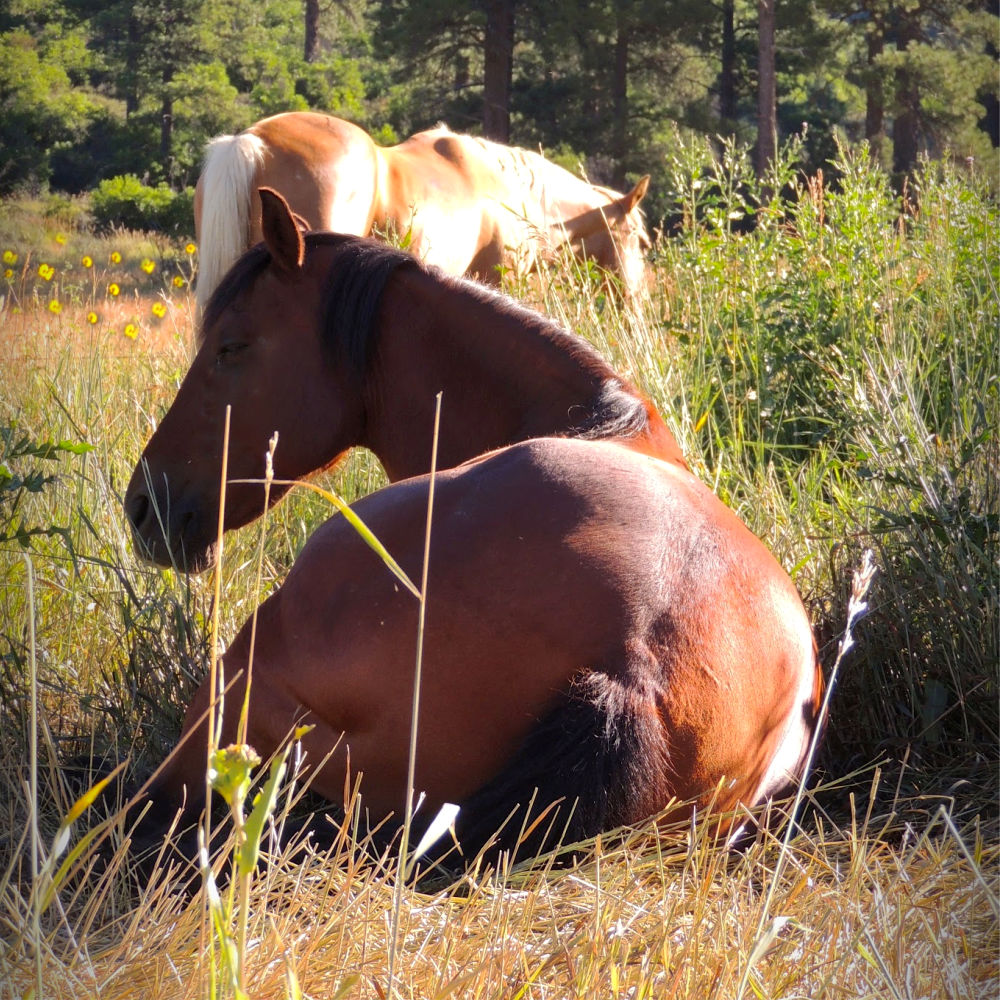Hello and welcome to another GENUINE CONNECTIONS LESSON. (delivered in 4 bite sized videos, video #1 above!).
Do you know a horse that
- Has to be tied in order to be saddled
- Gives negative feedback about the saddling process
- Stands still but is tense and tight while saddling
- Moves when the rider wants to get on
- Has a hard time to relax under saddle
- Easily shies and is unconfident while riding
- Wants to go faster and faster under saddle
- Displays any scary or even dangerous behavior while riding?
So many riding problems stem from our horse building tension way before we actually get into the saddle. That's why Saddling is Task #9 in the Happy Horse Inventory!
In this GC LESSON you will learn:
What does it look like when my horse braces mentally and emotionally so physical tension (= anxiety/fear) is the result? AND: What can I do about it...
My Quarter Horse Mare Cash is a very well bred mare (her daddy is a Hall of Fame/World Champion Cutting Horse) who sadly got a rough start before she entered my life. She was very claustrophobic!
The facility owner had lost her front teeth after Cash had charged through a halfway open gate in panic. She also had huge fears around trailer loading. While she looked fine during the saddling process, once asked to move forward she turned into a bucking bronco!
Back then, when I first got her, several people told me: "It's just the way she is. Just let her buck it out".
I was unwilling to accept such a statement. I was NOT going to subject my horse to fear and anxiety each time I was about to get on her. What a silly and also dangerous suggestion!
Her fears were seated deeply. Her fears were very ingrained and deep. Nobody in her life so far had taken the time to fix the issue... so I had to find a rather unconventional method to help her overcome her panicked reactions: I needed to 'uninstall' dangerous patterns and create a clean slate for a better relationship and outcome.
Nowadays, Cash is a centered, balanced mare since we always take the time to address her feedback and feelings that she shares with us.
Here you can see my gorgeous girl in all her glory, lazily enjoying a morning siesta at Red Horse Farm here in Pagosa Springs.

When this photo was taken, I had been busy producing content and working on the final touches for my program GENUINE CONNECTIONS. I also struggled with health issues while supporting a family member during a health crisis.
I hadn't ridden Cash in over a year, when a friend of mine came to visit a couple summers ago. My friend's main goal was to advance her riding skills.


